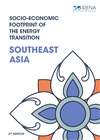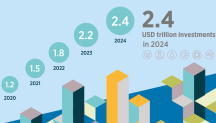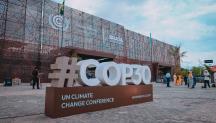

-
-
IRENA (2025), Socio-economic footprint of the energy transition: Southeast Asia (2nd edition), International Renewable Energy Agency, Abu Dhabi.
Copied
https://www.irena.org/-/media/Files/IRENA/Agency/Publication/2025/Oct/IRENA_SOC_Socioeconomics_energy-transition_Southeast_Asia_2025.pdf
Copied
Socio-economic footprint of the energy transition: Southeast Asia (2nd edition)
Newsletter
The Association of Southeast Asian Nations (ASEAN) is at a pivotal crossroads, at which the changing balance of global power, the rapid energy transition and closer cooperation within the region are redefining its development. As one of the world’s most dynamic and diverse regions, ASEAN is navigating a complex environment, balancing the imperatives of geo-economics, the demands of a just and secure energy transition, and the promise of further regional integration through enhanced power interconnection. These interlinked dimensions not only define the present challenges the region faces, but also are key to accelerating a more resilient, inclusive and sustainable future.
This second edition of the socio-economic footprint report – informed by IRENA’s Renewable energy outlook for ASEAN (2nd ed.) – explores the potential socio-economic impacts of the energy transition in Southeast Asia under two scenarios. Under the 1.5˚C Scenario, the GDP of Southeast Asia is expected to rise by 2.6% per year, on average, between 2023 and 2050, compared to the growth already anticipated in IRENA’s Planned Energy Scenario (PES).
The estimates in this new edition present a more stable and evenly distributed gain across all three decades. This transition towards a balanced long-term impact from a pattern of more front-loaded growth is enabled by the inclusion of regional power interconnection, and additional social-directed spending, which strengthens the resilience and inclusiveness of the transition. The GDP difference throughout the transition period (2023-2050) is driven by investment, trade and social policy interventions supported by regional integration efforts.




